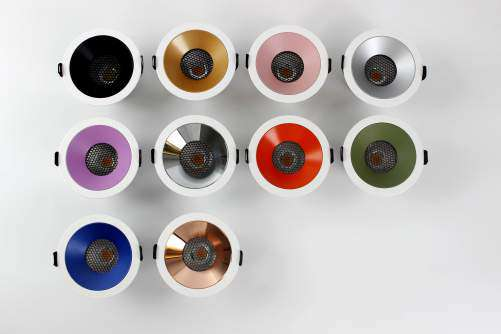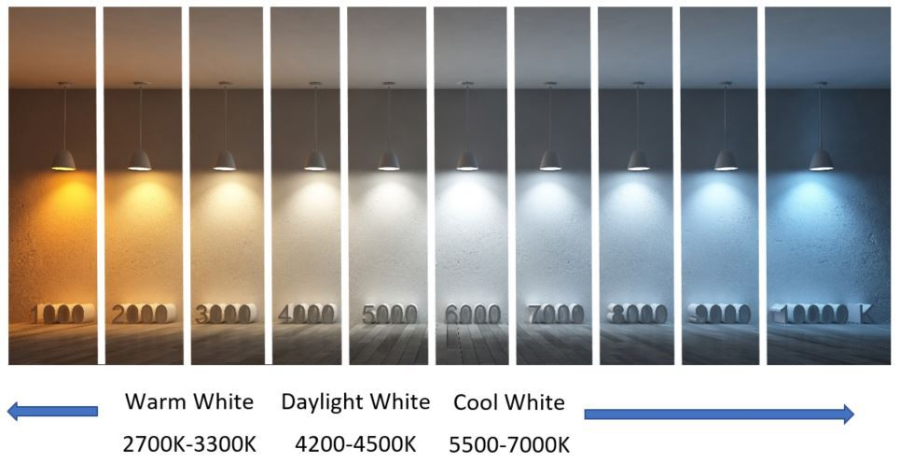With the increasing requirements for indoor lighting layout, simple ceiling lights can no longer meet the diversified needs. Downlights and spotlights play an increasing important role in the lighting layout of the whole house, whether it is for decorative lighting or the more modern design without main lights.
The distinction between downlights and spotlights.
First of all, downlights and spotlights are relatively easy to distinguish from the appearance. Downlights generally have a white frosted mask on the luminous surface, which is to make the spread of light more uniform, and spot lights are equipped with reflective cups or lenses, the most typical feature is that the light source is very deep, and there is no mask. From the aspect of beam angle, the beam Angle of the downlight is much larger than the beam Angle of the spotlight. Downlights are generally used to provide lighting in a wide range, and the beam Angle is generally 70-120 degrees, which belongs to flood lighting. Spotlights are more focused on accent lighting, washing walls to highlight individual objects, such as decorative paintings or art pieces. It also helps to create a sense of light and dark, creating an ideal space. The beam Angle is mainly 15-40 degrees. When it comes to other main performance indicators when choosing downlights and spotlights, there are common ones like power, light flow, color rendering index, beam angle and two unique indicators – anti-glare function and color temperature.
Many individuals for the understanding of anti-glare is “lamps are not dazzling”, in fact, this is completely wrong. Any downlight or spotlight on the market is very harsh when it is directly under the light source. “Anti-glare” means that you don’t feel the harsh afterglow when you look at the lamp from the side. For example, this classic series of spotlights uses a honeycomb net and reflectors to prevent glare and evenly diffuse light to the surrounding environment.

Second, the color temperature determines the light color of an LED lamp, expressed in Kelvin, and leads to how we perceive the emitted light. Warm lights look very comfortable, while cold white lights usually look very bright and uncomfortable. Different color temperatures also can be used to produce different emotions.

Warm white – 2000 to 3000 K
Most people enjoy comfortable light in their living areas. The redder the light, the more relaxed the mood it creates. Warm white LED lights with a color temperature of up to 2700 K for comfortable lighting. These lights can usually be found in the living room, dining area, or any room where you want to relax.
Natural white – 3300 to 5300 K
Natural white light creates an objective, positive atmosphere. It is therefore often used in kitchens, bathrooms and hallways. This color temperature range is also suitable for lighting offices.
The hall has a natural white temperature
Cold white – from 5300 K
Cold white is also known as daylight white. It corresponds to daylight at lunchtime. Cold white light promotes concentration and is therefore ideal for workplaces that require creativity and intense focus.
Post time: Dec-23-2023








